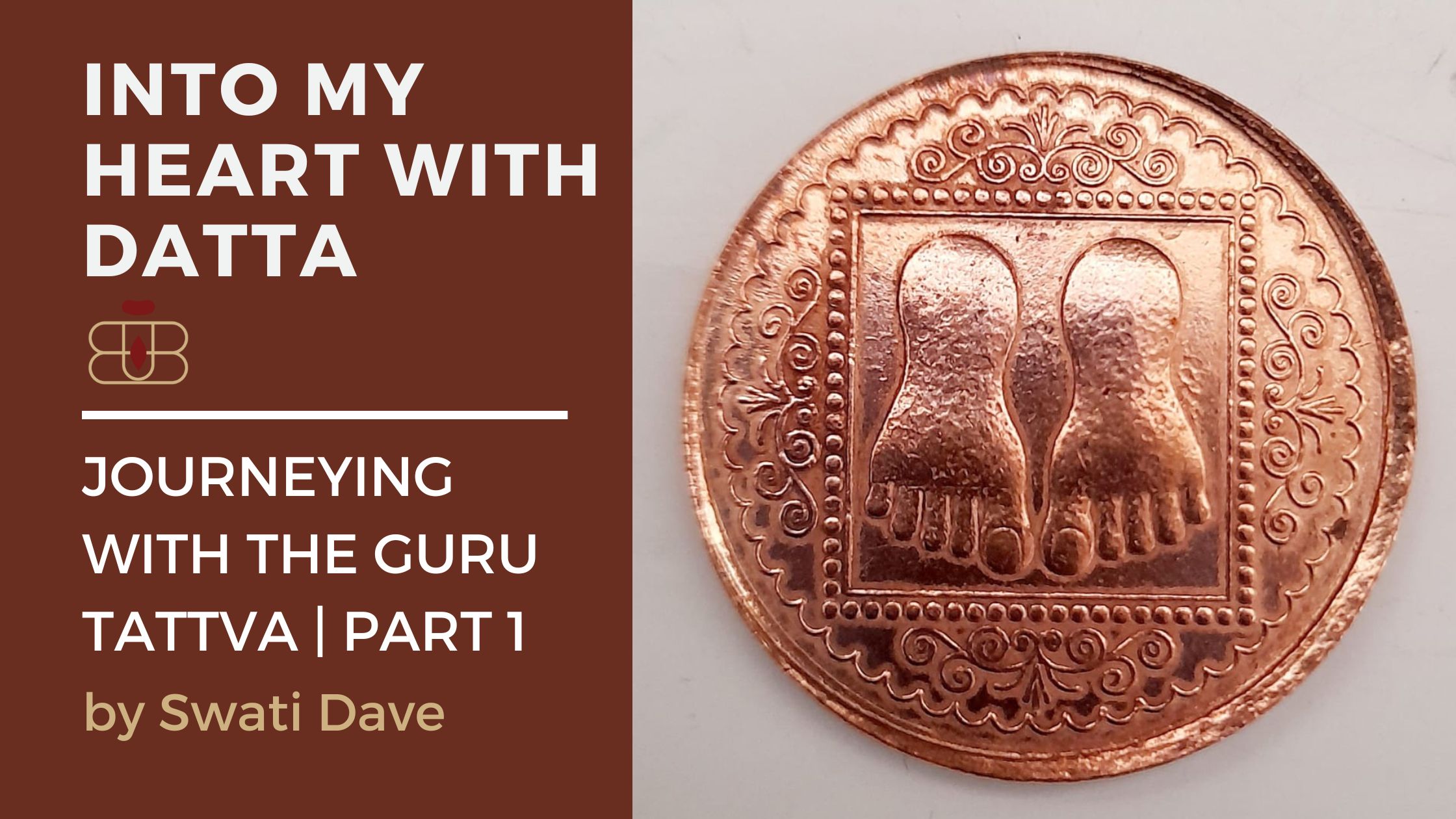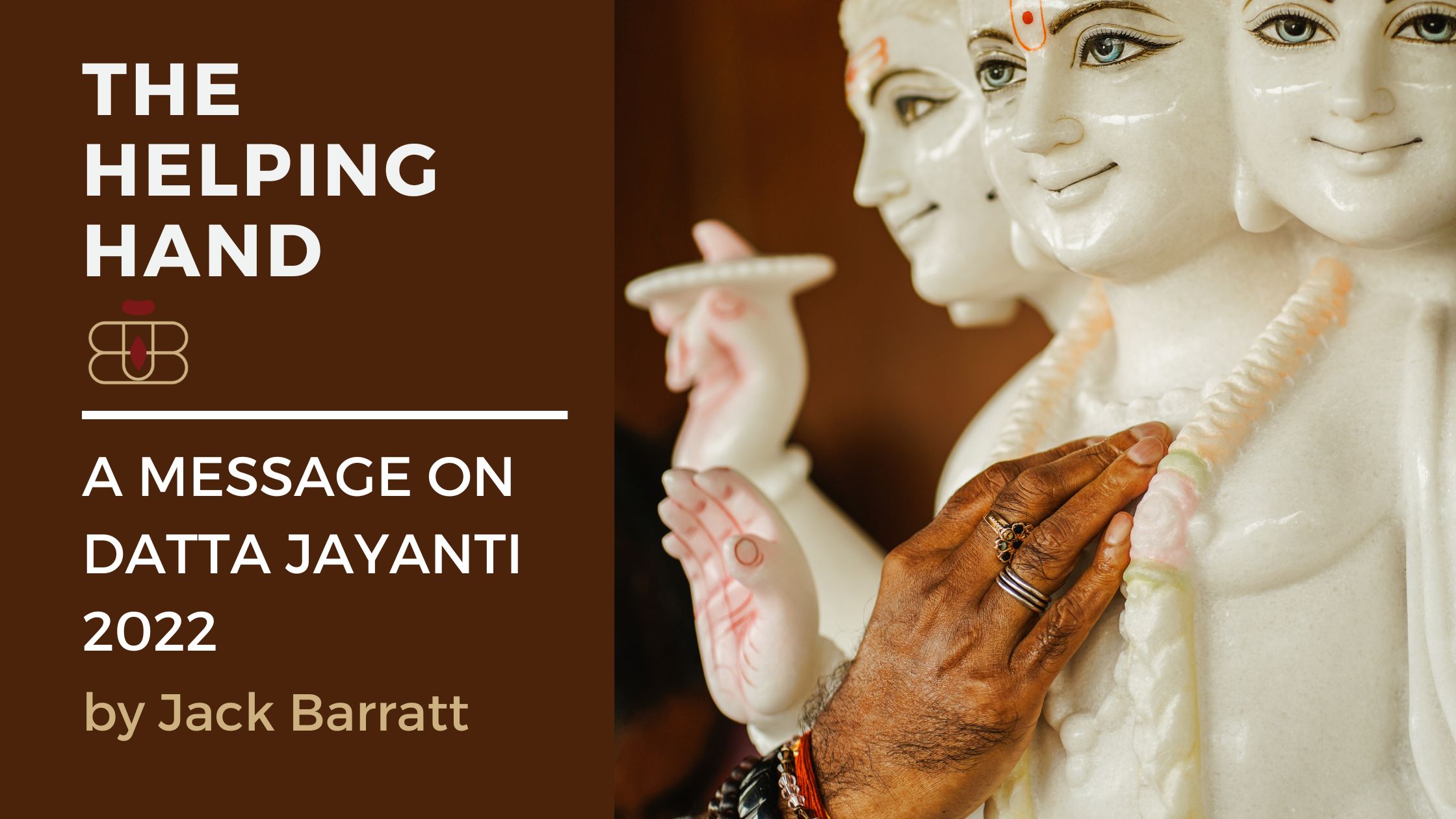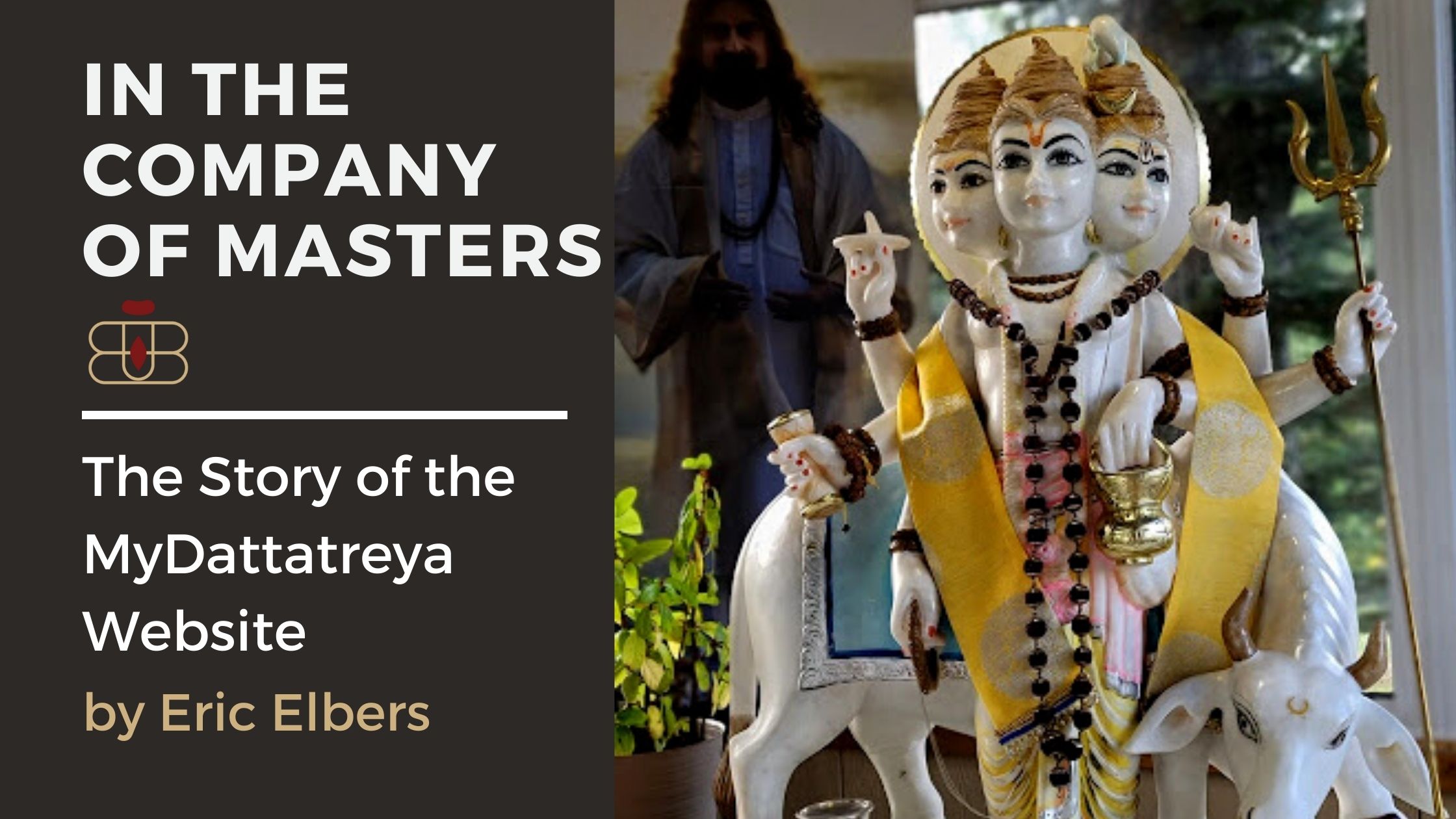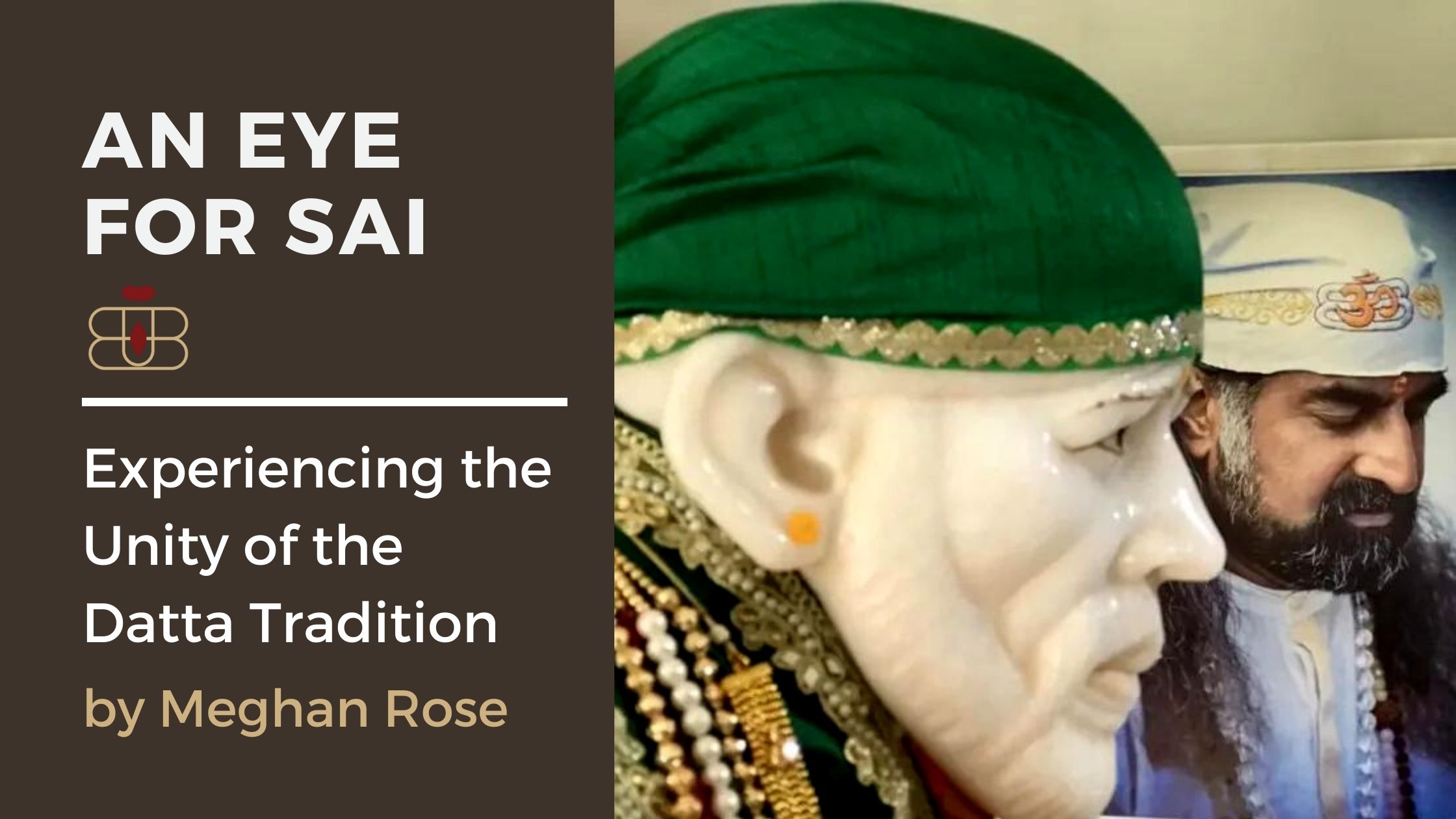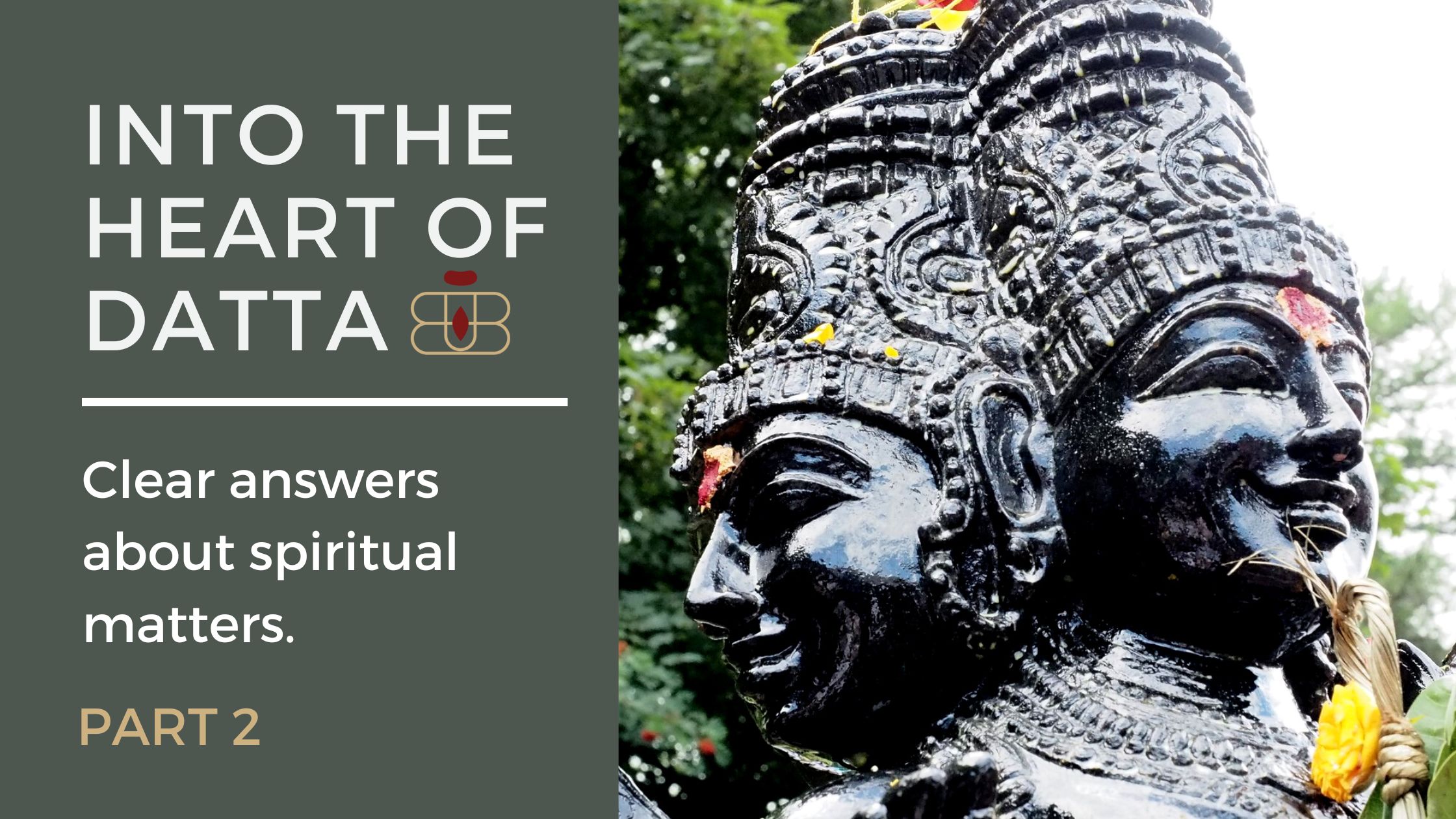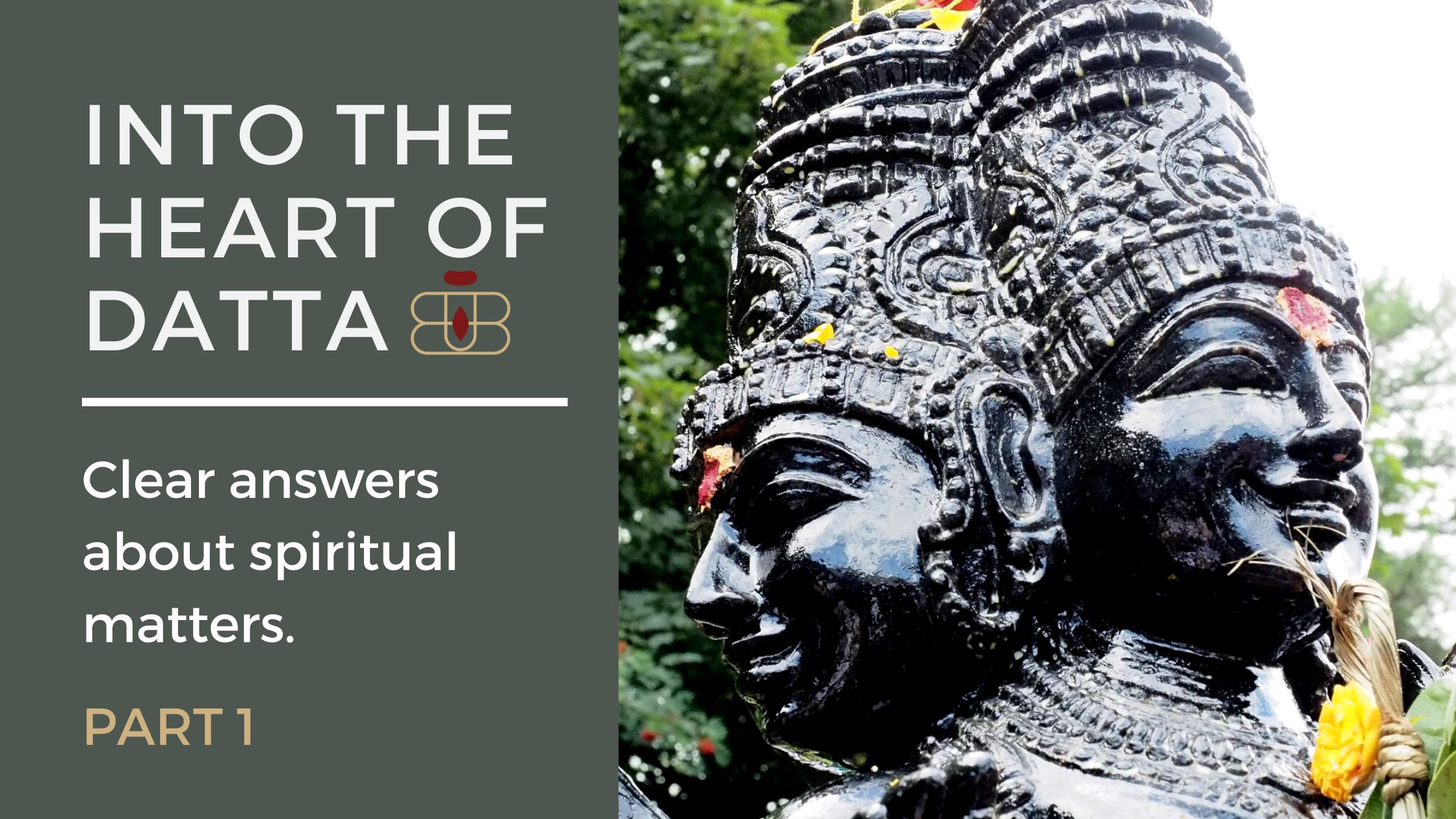Overview and Significance
Gorakshanath (also known as Gorakhnath), arguably one of the greatest yogis who ever lived, is famous as one of the founders of India’s Nath Hindu monastic movement. He is considered as one of the two notable disciples of Matsyendranath but since has become more famous and influential than his Master. His followers are found in India at the place known as Garbhagiri, which is in Ahmednagar in Maharashtra. Gorakshanath has long since been revered and deified and is considered a representative, and even an embodiment, of Lord Shiva. Gorakshanath is mentioned in older sources such as Padma Purana, Brahmanda Purana, Skanda Purana, along with Matsyendranath.
He was one of nine saints known as the Navnaths and is widely popular in Maharashtra, India. Hagiographies describe him as more than a human teacher and someone who was well established outside the laws of space and time, and who appeared on earth during different ages. Historians state Gorakshanath lived sometime during the first half of the 2nd millennium CE, but they disagree on which century. Estimates based on archaeology and texts range from Briggs’ 15th- to 12th-century to Grierson’s estimate of the 14th-century.
The position of the Nath lineage is considered supreme within the annals of spiritual practice in the overall Sanatana Dharma Tradition of India. The Nath lineage is believed to have originated from Adinath (Primordial Master) Lord Shiva, in whose lineage there are believed to have been nine Naths and eighty-four Siddhas (perfected Yogis, adepts). Historians place all of them in the Middle Ages from the ninth to the fourteenth century.
Matsyendranath and Gorakshanath (Guru and disciple) command the leading position among the Siddha Yogis of this lineage. Tradition holds that Adinath Shiva himself was Matsyendranath’s Guru, while he, Matsyendranath, was, in turn, Gorakshanath’s Guru. In this pair of Guru and disciple, Gorakshanath has achieved greater popularity and influence. Many Mahatmas of the Nath lineage consider Gorakshanath to be an incarnation of Lord Shiva. They argue that in a text of their lineage named Mahakalyoga, Lord Shiva has stated: ‘I am Goraksh. Consider that as my form. I have taken that form for the propagation of the path of yoga.‘
From medieval times onward, Gorakshanath is the well-known wonder-worker and master yogi of northern and western India. He and members of his order are celebrated in legend and song in countless villages. From Nepal to Rajiputana, from the Punjab to Bengal, from Sind to the Deccan, tradition and folklore are full of allusions to Gorakshanath recounting his wonderful deeds. He is the famous saint and worker of miracles; the founder and outstanding teacher of the Shaivite sect of ascetics, original instructor of Hatha Yoga, founder and leader of the Nath Yogis, and the patron saint and tutelary of the state named Goraksh in Nepal, whose royal house was the land’s rulers.
Gorakshanath is considered a Maha-yogi (or great yogi) in the Hindu tradition. He did not emphasise a specific metaphysical theory or a particular Truth but stressed that the search for Truth and the spiritual life should be a valuable and typical goal of man. Gorakshanath championed Yoga, spiritual discipline, and ethical life of self-determination as a means to reaching samadhi and one’s spiritual truths.
His influence is widespread. References to him are found in the poetry of Kabir and of Guru Nanak of Sikhism, which describe him as a compelling leader with a large following, thereby suggesting he likely lived around the same time these spiritual leaders lived in India. Historical texts imply that Gorakshanath was originally a Buddhist in a region influenced by Shaivism, and he converted to Hinduism championing Shiva and Yoga. Gorakshanath led a life as a passionate exponent of the ideas of Kumarila and Adi Shankara that advocated the Yogic and Advaita Vedanta interpretation of the Upanishads. Gorakshanath considered the controversy between dualism and non-dualism spiritual theories in medieval India as useless from a practical point of view. He emphasised that the choice is of the yogi and that the spiritual discipline and practice by either path leads to a ‘perfectly illumined samadhi state of the individual phenomenal consciousness.’
The Nath tradition states that its traditions existed before Gorakshanath, but the movement’s most significant expansion happened under the guidance and inspiration of Gorakshanath. He produced many writings and even today is considered the greatest of the Naths. It has been purported that Gorakshanath wrote the first books on Laya yoga.
In India, there are many caves, many with temples built over them, of which it is said that Gorakshanath spent time in meditation. According to Bhagawan Nityananda (of Ganeshpuri), the samadhi shrine (tomb) of Gorakshanath is at Nath Mandir near the Vajreshwari temple about one kilometer from Ganeshpuri, Maharashtra, India. According to legends, Gorakshanath and Matsyendranath did penance at the Kadri Temple in Mangalore, Karnataka. They are also instrumental in consecrating shivalingas at Kadri and Dharmasthala.
Many scholars associate the origins of Hatha yoga with the Nath yogis, in particular, Gorakshanath and his guru Matsyendranath.
The Gurkhas of Nepal and India take their name from this saint. He has long been considered the rashtradevata (lord of state) of Nepal, with his name appearing on numerous versions of Nepalese coins and currency notes. Gorkha, a historical district of Nepal, is named after him. There is a cave with his paduka (footprints) and his idol, and every year on the full moon day in the Hindu month of Vaishakha, there is a grand celebration at the cave called Rot Mahotsav that has been observed for the last seven hundred years.
In the Tamil Siddha tradition, Gorakshanath is named as Korakkar, and is one among the Eighteen Siddhas. In that tradition, Sage Agastya and Siddha Bhogar are claimed to have been his Gurus. His jeeva samadhi temple is in Vadukupoigainallur of Nagapattinam district of Tamil Nadu. According to one account, he spent a portion of his formative years in the Velliangiri Mountains in Coimbatore. Other sanctums related toKorakkar are Perur, Thiruchendur, and Triconamalli. Korakkar caves are found in Chathuragiri and Kolli Hills. Like other Siddhas, Korakkar is the author of works on medicine, philosophy, and alchemy. These include Korakkar Malai Vagatam (Korakkar’s mountain medicines), Malai Vaakadam, Korakkar Vaippu, Kaalamegam, Marali Varadham, Nilaiyodukkam, Chandhira Regai Nool, and many more. In his work, Chandira Regai Nool, Korakkar has predicted future events. One of such events predicted by him was that Bhogar will be born again in the world when people lose their faith in god.
Osho says about Gorakshanath:
‘Without Gorakh, there could be no Kabir, no Nanak, no Dadu, no Vajid, no Farid, no Meera — without Gorakh, none of these are possible. The fundamental root of all of them is in Gorakh. India’s whole saint tradition — those innumerable devotees of love — is indebted to Gorakh. Just as without Patanjali, there would be no possibility of yoga in India; as without Buddha, the foundation stone of meditation would be uprooted; just as without Krishna, the path of love would not find expression — similarly, without Gorakh, the search that began for methods and techniques of sadhana, of spiritual practice to attain the ultimate truth would not have been possible. Gorakh made many discoveries within man for the inner search, more perhaps than anyone else. He has given so many methods that in terms of procedures, Gorakh is the most significant inventor.
But why have people forgotten Gorakh? The milestones are remembered, the path breaker is forgotten. The ones who have decorated the path are remembered; the one who has first broken the path is forgotten. Forgotten because those who come after have the leisure to dress it up. One who comes first will be unpolished, unfinished. Gorakh is like a diamond just out of the mine. If Gorakh and Kabir would be sitting together; you would be impressed by Kabir, not by Gorakh. Because Gorakh is a freshly mined diamond, but on Kabir, the jewelers have worked hard; on him, the chisel has worked hard; much polishing has been done.’
Life History
Traditionally, Guru Gorakshanath is believed to have been born sometime in the 8th century, although some believe he was born hundreds of years later. He traveled widely across the Indian subcontinent, and accounts about him are found in several places, including Afghanistan, Balochistan, Punjab, Sindh, Uttar Pradesh, Uttarakhand, Nepal, Assam, Bengal, Kathiawar, Maharashtra, Karnataka, and even Sri Lanka.
Gorakshanath’s life and works are extraordinary. Tradition maintains that he was not born from the union of male and female as in the ordinary course. His works were also divine. The Nath Rahasya, which translates as ‘The Mystery of the Masters’, recounts the birth, work, and death of nine such Naths; and Guru Gorakshanath was the ninth Nath, preceded by his Guru, the eighth Nath, namely, Matsyendranath.
There is no confirmed report of Gorakshanath’s birthplace or date of birth. However, several theories have arisen from different parts of India where the locals of distinct ethnic regions claim that Gorakshanath was born in their area. One myth says he was born in Tilla, near Jhelum, in Punjab, while another claims that Gorakshanath initially had been a Buddhist named Ramnavajra. Another theory is that he was born in Assam, and a fourth theory claims that he was born in Uttar Pradesh. A fifth theory is that he was born in the Kathiawar Peninsula of Gujarat.
According to a legend, Shiva and Parvati quarreled, and Parvati, with a vain mind, told Shiva: ‘Adideva, everywhere you are, I am. You do not exist without me. You do not exist apart from me!‘ Shiva answered: ‘Maheshvari, wherever you are, I am. That is true. But to say that everywhere I am, you are – that is not true. It is like when there is a jar, there is always earth, but when there is earth, there is not always a jar.‘
To give a lesson to Parvati, Shiva divided himself into two parts, one as himself and the other as Gorakshanath. Gorakshanath, the true form of Shiva immaculate, went to a remote location and entered into deep meditation. Shiva and Parvati later approached the place, and Shiva told the goddess that there was a great Yogi who had been meditating there for a long time. Upon seeing a Yogi as radiant as a thousand suns, Parvati understood that he was a form of Shiva and wondered if he was not a creation of Mahadev intended as a response to her previous assertions. She thus decided to test the Yogi.
‘If the acts of Maya are irresistible, moreover Maya herself must be irresistible‘, she said. ‘My name is Maya. My power is superior.‘ Using the power of her maya, she filled the universe with her presence. But Gorakshanath remained unprovoked and did not turn from his meditation.
Parvati then went back to Shiva and said, ‘Lord, you were right. You can be without me. I have seen it. Who is this Yogi who did not consider my power and stayed in samadhi?‘
Shiva answered, ‘This Yogi you saw is Gorakshanath. He is superior to all gods and men. He is free from maya; he is the death of death. I am Gorakshanath. Gorakshanath is my essential form – we have no difference between us. Light is not different from light. I took the form of Gorakshanath for Veda, Cow, and Earth to be safe. Whosoever knows yoga can conquer death.‘
Gorakshanath went to look for a Guru and found him in Matsyendranath. So the divine Guru Shiva incarnated as Gorakshanath and then became the disciple of his own [Shiva’s] disciple Matsyendranath to help him in his efforts to propagate the doctrine of yoga.
Another legend states that when Lord Kartikeya left home, as per the legend, mother Parvati came down to the earth to meet her son Lord Kartikeya (aka Muruga or Kumara). Mother Parvati requested him to come back home. He agreed but said I will take birth on the earth for my Bhaktas (Devotees). Lord Kartikeya asked Mother Parvati to find a Guru for him when he would take birth on the earth. Mother Parvati suggested Guru Gorakshanath. Mother Parvati said Gorakshanath is a yogic manifestation of Shiva himself. Hence there was no duel between Guru Gorakshanath and Balaknath. Lord Kartikeya incarnated as Balaknath and simply accepted Guru Gorakshanath as his Guru, as listed in the list of 84 Maha Siddhas as per the Nath tradition, founded by Shambhujati Guru Gorakshanath.
According to another legend, Vishnu, Brahma, and Shiva came to Gorakshanath to obtain powers to create the World. Gorakshanath used sacred ash (vibhuti) from his akhanda-dhuni and blessed those three gods to create, maintain, and destroy the Manifested Phenomena. Therefore, Gorakshanath is perceived as Yogesvara, the one who protects the yogis.
Nathas believe that Gorakshanath appears in each Yuga (epoch) in various parts of Bharata (India), teaching yoga. According to some Gurus, Gorakshanath, Paramatma (Supreme Soul) is ever-present everywhere and incomprehensible. However, embodied beings cannot see Him as Paramatma; this is why he appears to ordinary people in his temporal form. Yogis claim that Gorakshanath paved the way to achieve the highest goal of yoga, which is moksha (liberation).
One section of the Nath lineage believes that Gorakshanath is not born of a human womb and is a Siddha Yogi with an immortal body that manifests in each of the four Yugas. He manifested in the Peshawar province of Punjab in the Satya Yuga, after that in Gorakhpur in Uttar Pradesh in Treta Yuga; in Dwapara Yuga, he manifested at Harmuj, which is farther away than Dwarka on the western coast of India and now under the sea, and in Kali Yuga, he appeared as Gorakh Madhi on Girnar Mountain in Saurashtra area of Gujarat. It is believed that in Dwapara Yuga, Gorakshanath was a contemporary of Lord Krishna.
In a legend known throughout northern India and Nepal, Gorakshanath is himself the product of ashes and cow dung – whence his name Go-Rakh (cow-ash). As the story goes, Matsyendranath enjoyed the hospitality of a Brahmin couple, and upon hearing they were childless, as a sign of appreciation, he gave the woman a piece of magical ash to eat. Matsyendra instructs her to eat it together with milk, following her purificatory bath after her next menses. However, instead of eating the ash, persuaded by her friends not to eat it, she throws it onto a heap of cow dung behind her hut. Twelve years later, Matsyendra returns and asks for the news of his son. When the woman avows that she had discarded the ash, Matsyendra scoops away twelve years of accumulated cow dung to reveal a perfect 12-year old child yogin – for the boy has been practicing his sadhanas (spiritual practices) there since birth – whom he names Goraksha (the Master who protects the cows and ‘cow’ is to be understood as an expression of ‘senses’) and makes him his disciple. Just as Matsyendra exhumed Goraksha from his ashes, Goraksha does the same to his disciples, first creating them from ashes and then initiating them with more of the same.
Gorakshanath is thus a ‘yogic-child’ par excellence, having no human parents. An ordinary sexual act did not occasion his birth. He is conceived out of the magic ‘ash’ he gestated in and was born from the Earth. All of these elements constitute significant aspects of the Nath worldview.
‘Go’ means senses, body, or the Universe; ‘raksha’ means a protector, Lord. Thus, Gorakshanath is the protector saint of the manifested phenomena. Gorakshanath is the founder of Hatha Yoga, and of the Order of Kanphats whose members cut their ears and wear big earrings (darshans or kundals), influencing the energy flows in the solar and lunar channels or nadis. These channels play a crucial role in the practice of Hatha Yoga. The initiation through cutting the ear cartilage and inserting earrings is performed at the highest level of the disciple’s training.
Moreover, Gorakshanath developed methods working with sound vibration, i.e., nada. This practice became the basis of Laya Yoga and its practice of nadanusandhana. One of the initiations in the Nath tradition is carried out using the nadi (ritual whistle) and the janeu (black woolen thread) as the symbols of the nadis (channels). These principles of working with sound vibration formed the basis of Shabar Tantra revealed by Matsyendranath, where mantras are created using Sanskrit and other Indian languages. Gorakshanath finalised the Shabar Tantra system, and due to this fact, he is considered its protector.
According to a well-known narrative, Matsyendranath, in the course of his career, temporarily forgot about his yogic identity while living in the country of women, married to their queen, enjoying the pleasure of sensual and family life. He returned to his yogic vocation only after Gorakshanath personally intervened – disguised as a female dancer – and through a series of poems he imparted the teachings of yoga back to his teacher.
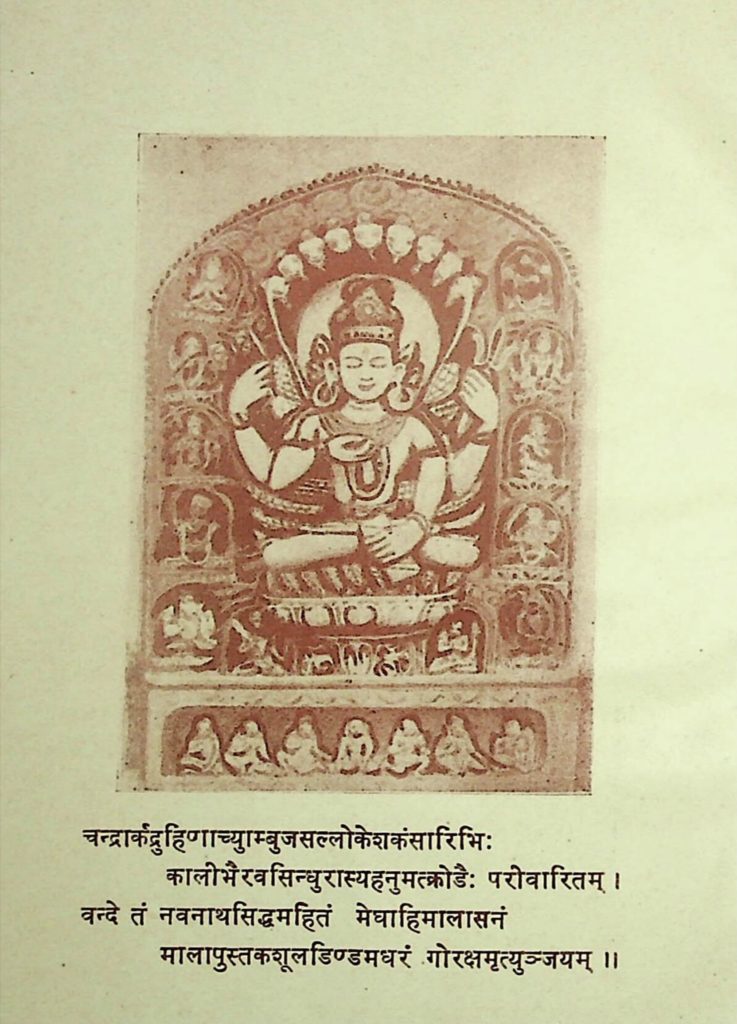
Tradition and Gurus
Although Gorakshanath is traditionally regarded as the disciple of Matsyendranath—understood by Natha yogis as the first human guru in their teaching succession—Matsyendranath probably preceded Gorakshanath by at least three centuries.
The Nath Sampradaya is considered a development of the earlier Siddha or Avadhuta Sampradaya, an ancient lineage of spiritual masters. The Nath Yogis are classical followers of Shaivism but do not recognise the caste system; it is followed by different communities and can be considered a sect within the Hindu religion.
In the Jnaneshvari, the 1290CE Marathi commentary of the Bhagavadgita by Jnandev, Jnandev quotes Gorakshanath as being the Guru of Gahininath. Gahininath was the Guru of Nivrittinath, who in turn was the brother and Guru of Jnandev.
There is writing available in the library of Pratap Philosophy Centre, Amalner, titled ‘An Introduction to Nath-Yoga,’ which records particular strong traditionally held views wherein it is believed that Jesus Christ received training in Yoga from a Nath-yogi teacher in the Himalayan region. This view gets support from the great scholar Akshaya Kumar Banerjee in his exceptional work ‘Philosophy of Gorakhnath’ (Pg 316), wherein he also admits to having known about these traditional claims. Even today, folklore of Kashmir quite interestingly vouches for a brief sojourn of Jesus in his early twenties in Kashmir, while on world travel, and many places in Kashmir are associated with this strange yet questionable event. (The early manhood years of Jesus, world scholars admit, are obscure and shrouded in mystery, and no one knows for sure if Jesus ever had been on a world tour; however, some researchers claim he undertook an extensive tour and became enlightened before he revealed himself as Son of God [God-realised] in Jerusalem).
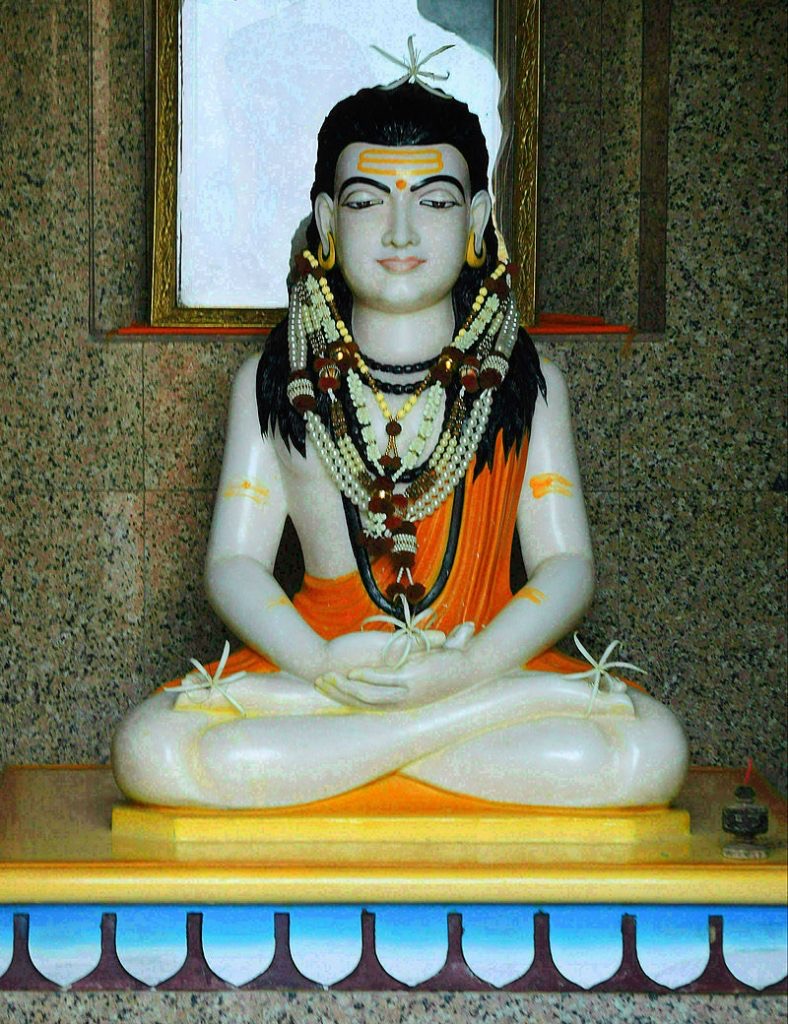
Teachings
As a yoga teacher, Guru Goraksh Nath always emphasised the practical side of yoga and was always against creating any kind of sophisticated philosophical doctrines. Instead, he created the Nath Panth, which presents within itself the living body of his teaching. His followers, the Nath Yogis, reach their goals not by proving the superiority of their doctrines over the doctrines of others or by arguments in the philosophical disputes, but achieve it practically, as a way of life, by following in his footsteps. The Siddha yogis (another name under which members of Nath Sampradaya are sometimes known) consider any attempts to grasp and express the Absolute Reality with words or comprehend it by the mind as useless.
He always stayed away from creating too many theoretical conceptions, and even his most philosophical book Siddha Siddhanta Paddhati is counted by modern researchers as only a semi-philosophical work. This is not a matter of big wonder because he states that it is impossible to express Absolute Truth by written words at the beginning of this book. Yet, to bring ideas of Enlightened Siddha Yogis in front of the masses, he attempts to express them. In such a way, he steps away from all possible future disputes by accepting that from the point of Absolute truth, all that he is going to narrate is only relative truth and only one of many points of view. He insisted that Higher Spiritual Reality can only be realised and experienced individually through Yogic practices and can’t be defined by debates.
Instead of indulging in different discussions and attempts to prove the superiority of his doctrine over others through argumentation, he practically realised the essence of his teaching and became an actual example of the perfect yogi. His teachings are straightforward, based on correct knowledge of subtle structures existing inside the body, and laws existing in the universe. It is so logically interconnected that even today, his teachings appear most wonderful. Life as yoga [living in union with the Supreme] and to be a real example of what a yogi should be like constitutes the core of his teachings.
Conceptions are always only conceptions, and however refined and well-argued they are, he felt that they lead us nowhere in the end. Moreover, with yoga advising restraining the mind from all possible kinds of sensual activities, submersing the mind in philosophy appears as nothing but as a form of intellectual indulgence. Conforming ourselves with well-balanced arguments will not save us from the inevitably coming death. It can be compared with the ostrich, who, when he sees approaching danger, puts his head deep into sand in the hope of avoiding it.
The metaphysical doctrine, which Gorakshanath preached along with his instructions on yogic discipline, was not purely the result of any logical reasoning, nor did he attempt to put his doctrine in exact logical forms. The ultimate basis of his philosophy was his supra-mental and supra-intellectual experience in the samadhi [self-realised] state of his consciousness. It was an intellectual expression of his transcendent experience, presented as an enlightening way of thinking and meditation to seekers of truth, peace, and freedom from bondage and sorrow.
He taught people that Truth was the same, in whatever forms of language it might be expressed, and in whatever paths the intellect might approach it. The mind must seek for the Truth with sincerity and earnestness and must not be led away by undue attachment to particular forms of language or particular methods of thinking.
Gorakshanath’s contributions to the world can be found in the following texts;
- Gorakh Samhita (“Collections of Gorakh”)
- Goraksha Gita
- Siddha Siddhanta Paddhati
- Yoga Martanda
- Yoga Siddhanta Paddhati
- Yoga-Bija
- Yoga Chintamani
- Goraksha Shataka
- Gorakh Bodh
- Goraksha Vijaya
- Amanaska Yoga
- Amaraughaprabodha, Amaraughoshasana
Gorakh Bodh (‘Illumination of Gorakh’) is an obscure ancient Hindi text, written as an intense dialog between Gorakshanath and his teacher, Matsyendranath. In it, he is described as the founder of the Nath Sampradaya. It is stated that the nine Naths and 84 Siddhas are all human forms created as yogic manifestations to spread the message of yoga and meditation to the world. It is they who reveal samadhi [self-realisation] to humanity.
The Siddha Siddhanta Paddhati is a Hatha Yoga Sanskrit text attributed to Gorakshanath. According to George Feuerstein, it is one of the earliest hatha yoga scriptures, containing many verses that describe the state of an Avadhuta or fully liberated yogi. This text is based on the framework of advaita (non-duality), where the yogi sees ‘himself in all beings and all in himself’, including the identity of the individual soul (Atman) with the universal (Brahman). This idea appears in the text in various forms, such as in the following example.
The caste system as viewed by the Naths:
The four varnas (castes) are perceived as part of the nature of the individual, i.e., Brahmana in sadachara (righteous conduct), Kshatriya in shaurya (bravery and courage), Vaishya in vyavasaya (business), and Shudra in seva (service). A yogi experiences all men and women of all races and castes within himself. Therefore he has no hatred for anybody. He has love for every being.
— Gorakshanath, Siddha Siddhanta Paddhati III.6-8 (Translator: D Shastri)
A story of Gorakshanath:
One man told Goraksha that he was thinking of committing suicide.
Gorakhsha said: ‘Go and commit it, but I tell you, afterward you will be amazed.‘
That man said: ‘What do you mean? I came to you so that you would tell me, “Don’t do it!” I went to other sadhus. They all cautioned me: “Brother, don’t do it, suicide is a great sin.”
Gorakhsha replied: ‘Are you mad? No one can commit suicide. No one can even die. Dying is not possible. I warn you, do it, and you will be very surprised. After committing suicide, you will discover, “What! The body is left behind, but I am exactly as I was!”… If you want to commit real suicide, then stay with me. If you want to play nonsense games, then it’s up to you — jump from some mountain, put your neck in a noose. But if you want the real death, then stay by my side. I will give you the art which brings on the great death. Then there will be no possibility of coming back again.’
Sacred Practices/Sadhana
The focus is on yoga. Here, the mastery of the body does not strictly refer to an ability to assume various postures.
More importantly, it implies an ability to redirect the Bindu [vital essence] flow and thus escape death or achieve immortality. Bindu is the drop of immortality that ordinary and ignorant people waste through their creative energy through modes of activity that are primarily self-centred or solely pleasure-based. Bindu needs to be controlled through the disciplining of attention and returned to the top of the head through yoga. At its highest station, on top of the head, the Bindu turns into an elixir (Amrit). In its journey from the bottom of the spine to the top of the head, the Bindu passes through a set of chakras, or energetic vortexes.
Gorakshanath says, ‘Only the person who has a guru can hope to drink the elixir of immortality; the one who is without a guru remains thirsty.‘
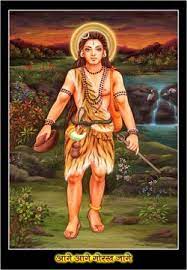
Miracles
- The Nath Siddhas, Gorakhsha in particular, are great yogic progenitors, fertilizing women with their yogic seed, which they carry in their jholi (wallets), in the form of rice grains, barleycorns, ashes, or water in which their loincloth has been washed. Several of Gorakhsha’s illustrious disciples including Guga, and Charpati, were conceived and born this way.
- Like calcined mercury, the ashes of a Nath Siddha can transform matter in a myriad of other ways. In the legend of Puran Bhagat, Gorakhsha turns bullocks into men and women into donkeys with ashes. With ashes, he dries up wells and causes a garden to burst into bloom.
- In the legend of Guga Pir, Gorakhsha creates gemstones and caters for a wedding with ashes.
- One day, Gorakshanath held a great feast for his fellow yogins. When food had been dished out on leaf plates, the place of honour was given to Gorakshanath’s venerable disciple Ratannath. As fate would have it, there were two plates of food lying before Ratannath when he sat down. After eating the food from the first plate, Ratannath then stood before the second plate. After pronouncing a mantra, he caused ashes to flow from his body in the manner of Shiva. Then he made those ashes into a ball, which he placed before the second plate of food. He then announced that the ball of ashes would eat the food in front of it. The other yogins, who had begun to laugh, were quickly silenced when they saw that Ratannath’s yogic energy was causing the ball to expand. The ball then split open, and a laughing, fully formed boy emerged from it and set about eating the food on the plate before him. It was then decided that this boy should be given a name and initiation into the Nath Order. Gorakh named the boy Kayanath (Body-Nath, who likely lived in the 17th century in present-day Pakistan, historically one of the most important centres of Nath sampradaya). Kayanath later became the abbot of the Bhera Monastery, performed many miracles, and lived 101 years before quitting his mortal coil.
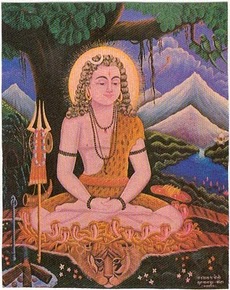
Contemporary Masters
- Kabir – Indian mystic and poet
- Guru Nanak – the founder of Sikhism
Holy Sites and Pilgrimages
- Gorakhpur takes its name from Gorakshanath.
- The Gorakhnath Math is a temple of the Nath monastic group of the Nath tradition. This math is located in Gorakhpur, Uttar Pradesh, within large premises. The temple performs various cultural and social activities and serves as the cultural hub of the city. A shrine called Gorakhnath Mandir was built in his honor at the location. The Gorakhnath Temple is 4.5 km away from the Gorakhpur Railway Station. Local transport, auto, and taxi are readily available from the railway station.
- A temple of Gorakshanath is situated on a hill called Garbhagiri near Vambori, Tal Rahuri; Dist Ahmednagar. There is also a famous temple of Gorakshanath in the state of Odisha.
- A famous Samadhi shrine of Gorakshanath is in the Nath Mandir, near Vajreshwari Temple, Ganeshpuri, Maharashtra.
- Legends also state that Matsyendranath and Gorakshanath did penance in the Kadri Temple, Mangalore, Karnataka, and installed a Shiva linga at Kadri as well as Dharmasthala.
- Legend states that Gorakshanath spent part of his childhood in the Velliangiri hills near Coimbatore. There is a Jeeva Samadhi temple of Siddha Gorakshanath in Vadakkupoigainallur, Nagapattinam, Tamil Nadu.
- Temples dedicated to him exist in Perur, Thiruchendur as well as Triconamalli.
Caves where he is said to have meditated exist in the following locations:
- Chathuragiri Hills, Kolli Hills (Tamil Nadu),
- Goraksha Gufa, Brahmagiri Hills, Nasik(Maharashtra),
- Jhilmili Gufa, Rishikesh
- Girnar, Junagadh, Gujarat (his padukas on the peak)
- Gorakshanath-gadh, Majarsubha hiill. Near Pandharichapool, Nevasa Dist. Ahmednagar, Maharashtra
Bibliography
- The Twilight Language of Gorakh Bodh by Shailendra Sharma (Author)
- Goraksha Samhita: Also Known As Goraksha Paddhati by Swami Vishnuswaroop
- Philosophy of Gorakshanath with Goraksha-Vacana-Sangraha by Akshaya Kumar Banerjea
- The Gorakhnath Enlightenment: The Path to Om by Jayraj Salgaokar
- Gorakshanath and the Kanphata Yogis by George Weston Briggs
- The Alchemical Body: Siddha Traditions in Medieval India By David Gordon White
- Sayings of Gorakshanath: Annotated Translation of the Gorakh Bani

